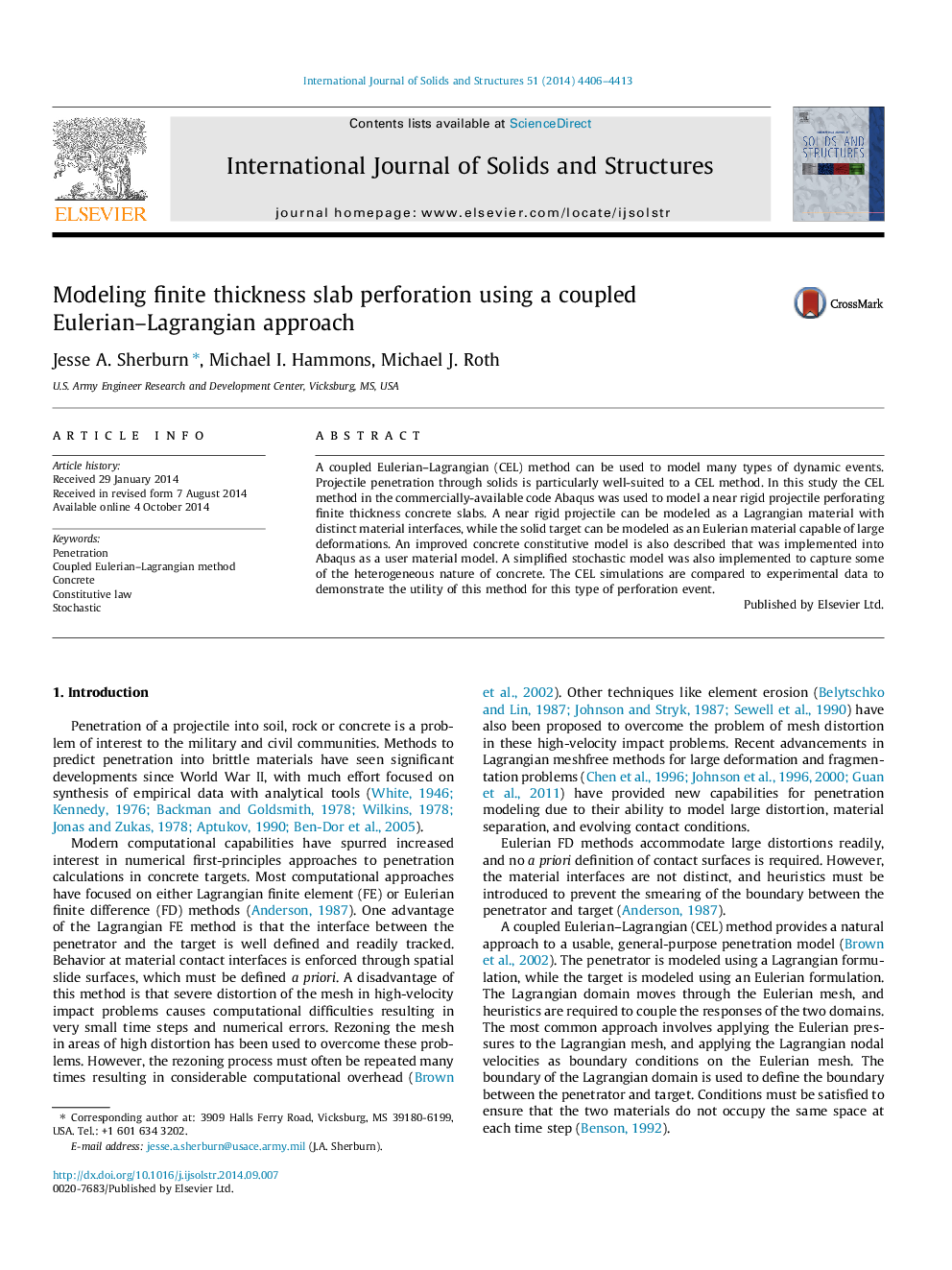| Article ID | Journal | Published Year | Pages | File Type |
|---|---|---|---|---|
| 277513 | International Journal of Solids and Structures | 2014 | 8 Pages |
•Penetration experiments were modeled with coupled Eulerian–Lagrangian method.•Constitutive model for concrete was modified and implemented in Abaqus.•A simplified stochastic model approximated the heterogeneous nature of concrete.•The coupled Eulerian–Lagrangian method reasonably matched experimental exit velocities.
A coupled Eulerian–Lagrangian (CEL) method can be used to model many types of dynamic events. Projectile penetration through solids is particularly well-suited to a CEL method. In this study the CEL method in the commercially-available code Abaqus was used to model a near rigid projectile perforating finite thickness concrete slabs. A near rigid projectile can be modeled as a Lagrangian material with distinct material interfaces, while the solid target can be modeled as an Eulerian material capable of large deformations. An improved concrete constitutive model is also described that was implemented into Abaqus as a user material model. A simplified stochastic model was also implemented to capture some of the heterogeneous nature of concrete. The CEL simulations are compared to experimental data to demonstrate the utility of this method for this type of perforation event.
